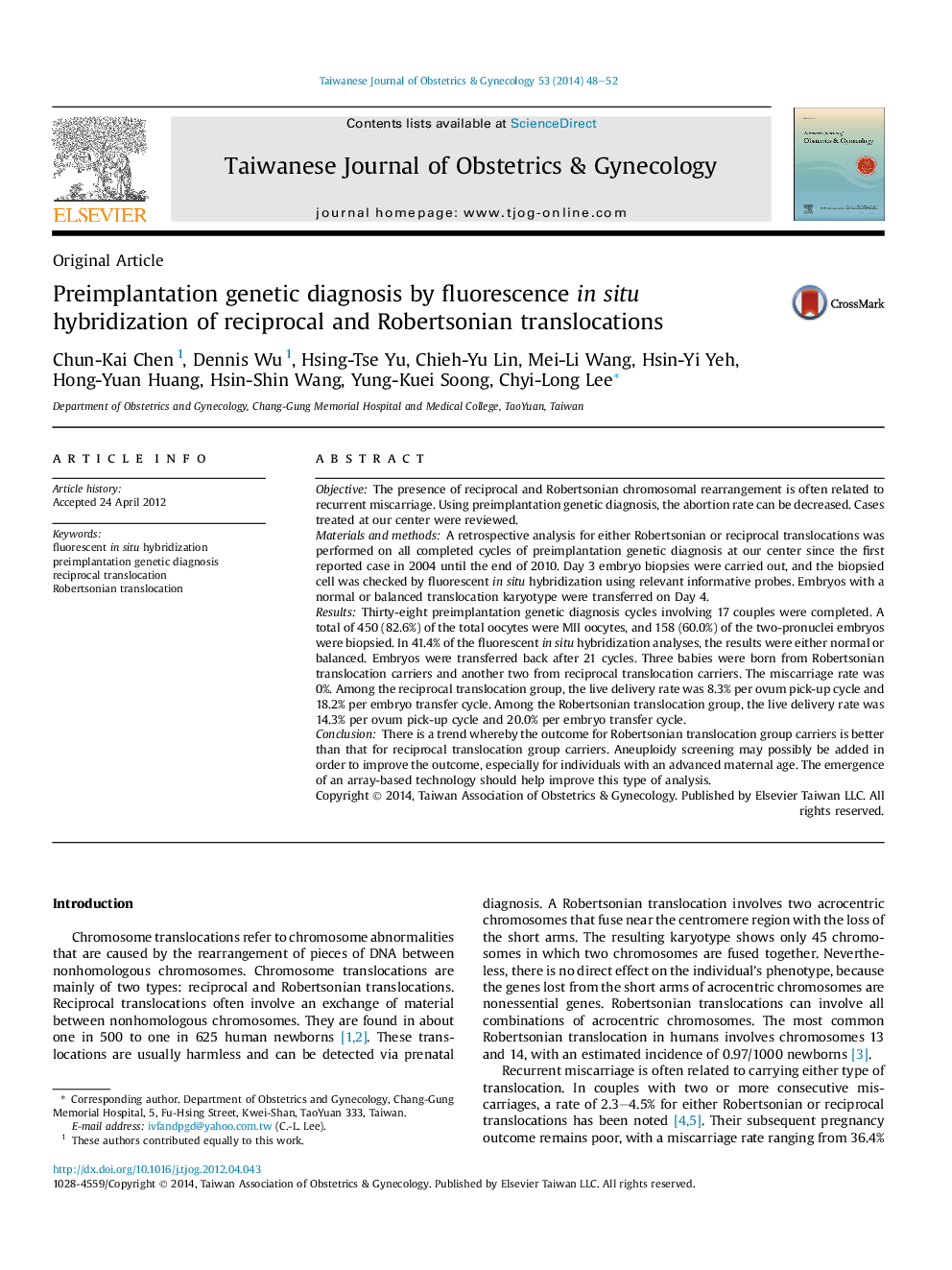| کد مقاله | کد نشریه | سال انتشار | مقاله انگلیسی | نسخه تمام متن |
|---|---|---|---|---|
| 3975393 | 1600978 | 2014 | 5 صفحه PDF | دانلود رایگان |
ObjectiveThe presence of reciprocal and Robertsonian chromosomal rearrangement is often related to recurrent miscarriage. Using preimplantation genetic diagnosis, the abortion rate can be decreased. Cases treated at our center were reviewed.Materials and methodsA retrospective analysis for either Robertsonian or reciprocal translocations was performed on all completed cycles of preimplantation genetic diagnosis at our center since the first reported case in 2004 until the end of 2010. Day 3 embryo biopsies were carried out, and the biopsied cell was checked by fluorescent in situ hybridization using relevant informative probes. Embryos with a normal or balanced translocation karyotype were transferred on Day 4.ResultsThirty-eight preimplantation genetic diagnosis cycles involving 17 couples were completed. A total of 450 (82.6%) of the total oocytes were MII oocytes, and 158 (60.0%) of the two-pronuclei embryos were biopsied. In 41.4% of the fluorescent in situ hybridization analyses, the results were either normal or balanced. Embryos were transferred back after 21 cycles. Three babies were born from Robertsonian translocation carriers and another two from reciprocal translocation carriers. The miscarriage rate was 0%. Among the reciprocal translocation group, the live delivery rate was 8.3% per ovum pick-up cycle and 18.2% per embryo transfer cycle. Among the Robertsonian translocation group, the live delivery rate was 14.3% per ovum pick-up cycle and 20.0% per embryo transfer cycle.ConclusionThere is a trend whereby the outcome for Robertsonian translocation group carriers is better than that for reciprocal translocation group carriers. Aneuploidy screening may possibly be added in order to improve the outcome, especially for individuals with an advanced maternal age. The emergence of an array-based technology should help improve this type of analysis.
Journal: Taiwanese Journal of Obstetrics and Gynecology - Volume 53, Issue 1, March 2014, Pages 48–52
